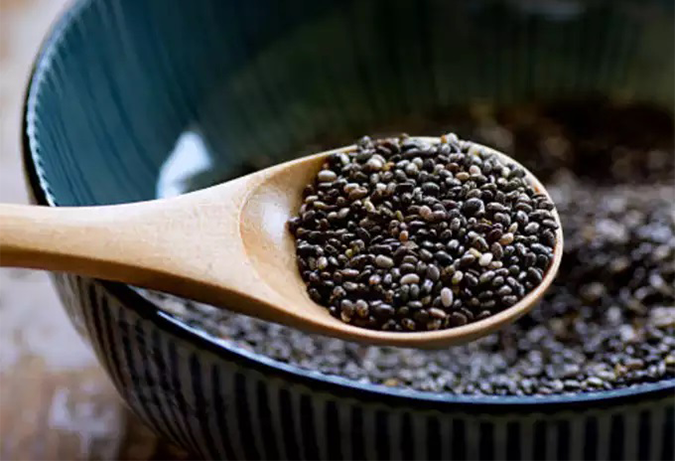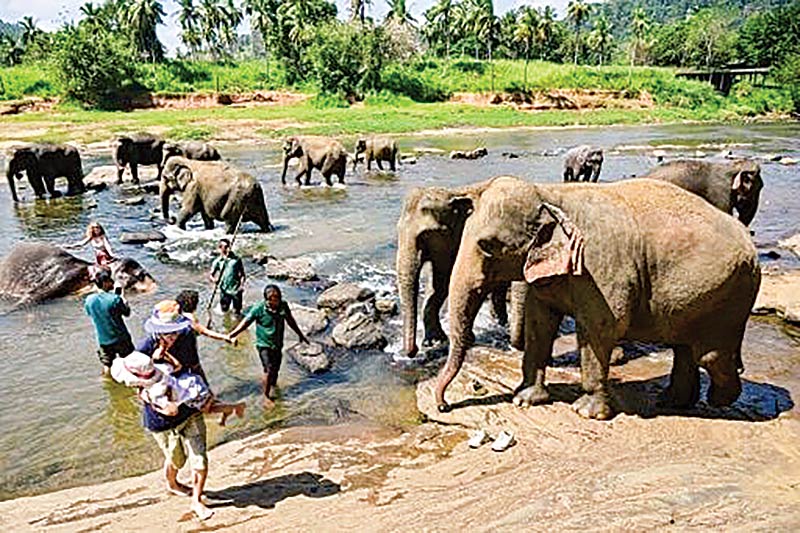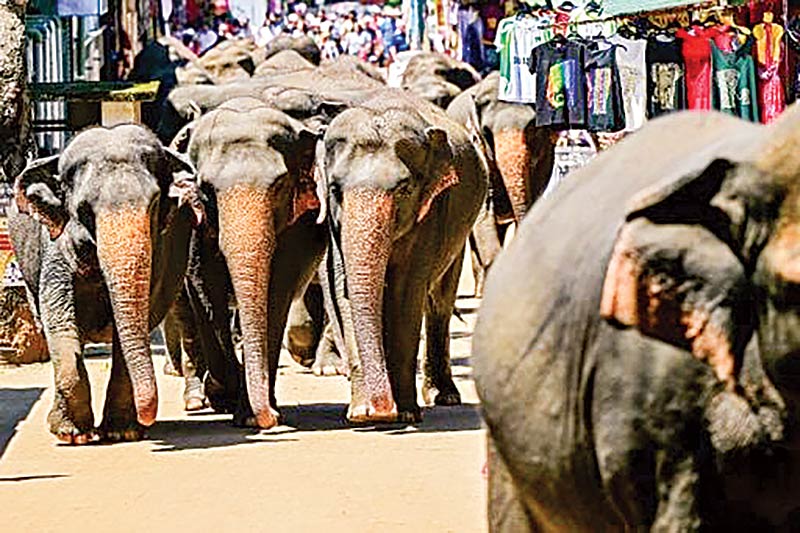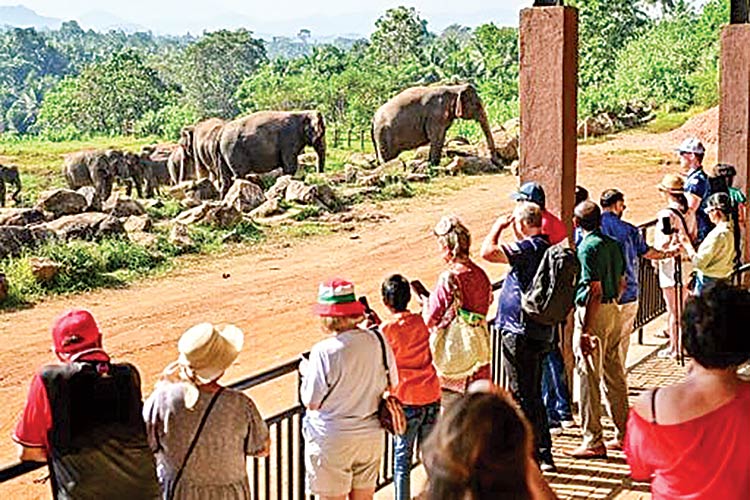Life style
The Seeds Strike Back

They’re sprouting up on store shelves and packed into puddings and pretzels and even jams. According to forecasts from Grand View Research, a firm that tracks the food industry, the market for chia seeds is expected to grow by more than 22 percent per year between 2019 and 2025.
Such is the life cycle of the chia seed — always popping up in one trend or another. The seeds have long been a staple in Latin America, and were even offered to Aztec gods during religious ceremonies, but every generation in America seems to think they’ve discovered them for the first time, said Beth Czerwony, a registered dietitian with the Cleveland Clinic’s Center for Human Nutrition.
During the last 40 years, chia has maintained a fairly constant presence in the public consciousness. They appeared as the furry plant Chia Pets in the late 1970s, and by the ’90s, health food companies started marketing them as a nutritional powerhouse. Over the past decade in particular, the tiny seeds have garnered an outsized reputation: as a purported hack for weight loss, a protein supplement and a staple of the ultra-healthy.
Now, thanks in part to social media, chia seeds are again on many people’s minds. Some TikTok users tout the purported benefits of an “internal shower” — a viral trend that involves drinking a supposedly cleansing sludge of chia seeds, water and lemon to relieve constipation and aid with weight loss. The hashtag #internalshower has been viewed more than 100 million times.
“When it was trendy in the early 2000s, the kids talking about it now might not have even been born,” Ms. Czerwony said. “Everything old comes back.”
We asked nutritionists and doctors if the latest chia craze lives up to its healthy hype.
Are chia seeds really that good for you?
Chia seeds are not a magic conduit to weight loss or a cure for disease, but they are “incredibly healthy as a natural food source,” said Dr. Melinda Ring, an integrative medicine specialist at Northwestern Medicine.
As with anything, though, you have to be careful to not overdo it, said Dr. Lisa Ganjhu, an associate professor at the N.Y.U. Grossman School of Medicine who specializes in gastroenterology. She warned against eating the seeds straight, which can upset digestion. Instead, soak them in water or plant-based milk for several hours until they expand to a gelatinous slime, or add ground chia seeds to baked goods. You can also swirl them into a smoothie, where they can absorb the liquid, or else mix them into a pudding.
If you eat too many chia seeds — say, several pounds in a sitting — you run the risk of bloating, cramping, discomfort and diarrhea, she said.
What are the health benefits of chia seeds?
A serving of chia seeds — roughly two tablespoons — won’t transform your entire diet, or replace the vitamins you should be getting from vegetables. But doctors and dietitians point to a few key health benefits:
They’re high in fatty acids.
Chia seeds contain remarkably high levels of an omega-3 essential fatty acid known as alpha-linolenic acid, or A.L.A. You can only get these acids from your diet, Dr. Ring said, and eating foods that are rich in A.L.A.s can help prevent heart disease. In fact, the seeds are one of the richest plant sources of omega-3 fatty acids; one serving has more than twice the daily amount of A.L.A. recommended by the National Institutes of Health.
They have lots of fibre
Two tablespoons of chia seeds have around ten grams of dietary fiber — more than twice that of an apple. Fiber-rich foods promote gut health by encouraging bowel movements — hence, the thought behind the “internal shower.” But Dr. Ganjhu said she thinks of chia seeds as more of an “internal Brillo pad.”
“It will definitely push things through,” she said.
The fiber in chia seeds can also keep you fuller for longer, especially if you soak the seeds first. The soft outer layer that coats seeds softens up and congeals into a gel-like form, which can further expand in your stomach, Ms. Czerwony said.
They contain antioxidants.
Chia seeds are high in several potential antioxidants, which can help break down free radicals that damage our cells, Ms. Czerwony said. While it is possible to have too many antioxidants, doctors say most people would benefit from more in their diets, because free radicals can build up in the body over time, leading to — among other problems — plaque formations in the heart.
They’re a handy workaround to dietary restrictions.
Ms. Czerwony said she has seen patients use chia seeds, which are gluten-free and vegan, as an egg substitute, using the similar consistency to bake pancakes and breads.
And chia seeds are a good source of protein, although considerably less so than soybeans or quinoa, Dr. Ring said, which makes them an ideal supplement for vegetarian diets, or for anyone looking to lower their meat intake.
“It’s a good trend — it’s healthy,” Ms. Czerwony said. “It’s not going to hurt you.”
An increased interest in maintaining a healthy lifestyle has prompted recent studies on the health benefits of novel functional foods such as chia seeds, acai berries, and apple cider vinegar, all of which have significant nutritional and disease prevention characteristics. Chia seeds, in particular, are often referred to as a “superfood” or functional food. What are chia seeds?
Research interests in chia seeds were prompted by their high content of ?-3 fatty acids, with a potential role in reducing the risks of chronic diseases such as diabetes, cardiovascular disorders, nervous system diseases, and inflammatory diseases. Chia belongs to the Lamiaceae family of oleaginous plants, which originates from Southern and Central America.
Chia seeds are increasingly popular as a gluten-free alternative, and the grain is widely available as whole seed, oil, and flour. Additionally, chia seeds are often incorporated into various food products such as multigrain bread, cereals, and nutrition bars as a result of their nutritional properties.
In terms of their macronutrient content, chia seeds contain carbohydrates (42.12?g/100?g), fat (30.74?g/100?g), dietary fiber (34.4?g/100?g), and protein (16.54/100?g). These seeds also contain antioxidants in significantly higher quantities than many other crops and are high in phenolic compounds, which are known for their antioxidant content.
Protein
The protein content of chia seeds is around 15–24%. The main protein component is globulins, which comprise 52-54% of total storage proteins, as well as albumins, glutelin, and prolamin which make up 17.3%–18.6%, 13.6%, and 17.9% of the protein content of chia seeds, respectively.
Globulins are a rich source of glutamic, aspartic, aromatic, and sulfur amino acids. Overall, these globulins contain essential amino acids including leucine, lysine, histidine, valine, isoleucine, methionine, threonine, phenylalanine, and tryptophan. These amino acids also play a role in metabolic activity.
Glutamic acid is associated with stimulating the central nervous system and athletic endurance. Aspartic acid also contributes to proper nervous system function and the regulation of hormones. Comparably, sulfur-containing amino acids are implicated in the function of tertiary and quaternary structures of proteins. Moreover, chia seeds are also a potential source of bioactive peptides, which can act as protecting agents against oxidative processes.
w-3 and w-6 fatty acids in chia oil lend themselves to skin applications because they can inhibit melanin hyperpigmentation. More specifically, these fatty acids can down-regulate the expression of melanogenesis-related genes that encode key melanogenic proteins. These phenolic compounds also possess antioxidant properties that can mitigate the effect of oxidants that promote cell damage.
Chia seeds also possess cardioprotective effects. For example, w-3 fatty acids can improve heart health, as indicated by previous studies demonstrating that the increased uptake of ALA can decrease the risk of mortality from heart failure.
Another investigation revealed that the key benefits of chia seeds on the cardiovascular system include a good source of w -3 fatty acids, higher fiber, and iron content, as well as better calcium and magnesium profiles as compared to milk. This study also demonstrated the ability of chia seeds to stabilize blood glucose levels in diabetic patients, prevent myocardial infarction and strokes by inhibiting platelet aggregation, and reduce blood pressure.
Conclusion
In summary, chia seeds are an ancient grain whose growing popularity worldwide is driven by its nutritional profile that offers a wealth of functional benefits. In particular, ALA places chia seeds as an excellent source of w-3 fatty acids, which have been associated with many positive physiological functions in human beings.
In addition, chia seeds are a good source of antioxidants that have cardiac, hepatic protective effects, anti-aging, and anti-carcinogenic properties. Chia seeds are also a great source of dietary fiber, which is beneficial for the digestive system and plays a role in the control of the development of diabetes.
On a macromolecular level, chia seeds contain unsaturated fatty acids, gluten-free protein, vitamins, minerals, and phenolic compounds, all of which are essential components of a healthy balanced diet. On a systemic level, chia seeds can have a therapeutic role in diabetes, dyslipidemia, and hypertension, in addition to having an important role in anti-inflammatory and anti-oxidative processes Chia seeds have also been reported to provide antidepressant and analgesic properties, as well as potential supporting roles in vision and immune processes.
(BBC)
Life style
Sri Lanka’s first elephant orphanage celebrates 50 years

By Amal Jayasinghe
Pics by Ishara Kodikara
Sri Lanka’s main elephant orphanage marked its 50th anniversary on Sunday february 16 with a fruit feast for the 68 jumbos at the showpiece centre, reputedly the world’s first care home for destitute pachyderms. The Pinnawala Elephant Orphanage lavished pineapples, bananas, melons and cucumbers on its residents to celebrate the anniversary of their home, which is a major tourist attraction.
A few officials and tourists invited to the low-key celebration were served milk rice and traditional sweets while four generations of elephants born in captivity frolicked in the nearby Maha Oya river.
“The first birth at this orphanage was in 1984, and since then, there have been a total of 76,” said chief curator Sanjaya Ratnayake, as the elephants returned from their daily river bath.
“This has been a successful breeding programme, and today we have four generations of elephants here, with the youngest 18 months old and the oldest 70 years,” he told AFP.
The orphanage recorded its first twin birth in August 2021 — a rarity among Asian elephants — and both calves are doing well.
Two years before the orphanage was formally established as a government institution in February 1975, five orphaned elephants were cared for at a smaller facility in the southern resort town of Bentota.
“Since the orphanage was set up at Pinnawala in 1975, in a coconut grove, the animals have had more space to roam, with good weather and plenty of food available in the surrounding area,” Ratnayake said.
The home requires 14,500 kilos of coconut and palm tree leaves, along with other foliage, to satisfy the elephants’ voracious appetites.
It also buys tonnes of fruit and milk for the younger calves, who are adored by the foreign and local visitors to the orphanage, located about 90 kilometres (56 miles) east of the capital Colombo.
It is also a major revenue generator for the state, earning millions of dollars a year in entrance fees. Visitors can watch the elephants from a distance or get up close and help scrub them during bath times.
– Tragic toll –
The facility lacked running water and electricity at its inception but things improved as it gained international fame in subsequent years, said retired senior mahout K.G. Sumanabanda, 65.
“I was also fortunate to be present when we had the first birth in captivity,” Sumanabanda told AFP, visiting the home for the jubilee celebrations.
During his career spanning over three decades as a traditional elephant keeper, he trained more than 60 other mahouts and is still consulted by temples and individuals who own domesticated elephants.
Twenty years ago, Sri Lankan authorities opened another elephant home south of the island to care for orphaned, abandoned or injured elephants and later return them back to the wild.
While Pinnawala is seen by many as a success, Sri Lanka is also facing a major human-elephant conflict in areas bordering traditional wildlife sanctuaries.

Elephants return to Sri Lanka’s Pinnawala Elephant Orphanage after taking their daily bath in a river
Deputy Minister of Environment Anton Jayakody told AFP on Sunday that 450 elephants and 150 people were killed in clashes in 2023, continuing an alarming trend of fatalities in the human-elephant conflict. The previous year saw 433 elephants and 145 people were killed.
Killing or harming elephants is a criminal offence in Sri Lanka, which has an estimated 7,000 wild elephants and where jumbos are considered a national treasure, partly due to their significance in Buddhist culture.
But the massacre continues as desperate farmers face the brunt of elephants raiding their crops and destroying livelihoods.
The minister was confident the new government could tackle the problem by preventing elephants from crossing into villages.
“We are planning to introduce multiple barriers—these may include electric fences, trenches, or other deterrents—to make it more difficult for wild elephants to stray into villages,” Jayakody told AFP.
Life style
Growing the Cultural Landscape with Suhanya Raffel

The Geoffrey Bawa Trust which was launched its 2025 is followed by Curatorial Conversations Series. Recently a presentation was made S by M+ Museum director and Geoffrey Bawa Trustee Suhanya Raffel. Speaking at the new Bawa Space on Horton Place, Raffel drew on extensive experience in the museum and art world to present insights and programming from the M+ Museum in Hong Kong. M+ is Asia’s first global museum of contemporary visual culture and presents itself as an intersection of visual art, design and architecture, and the moving image.
The evening presented an opportunity to hear from a leading expert in the museum field and discuss Sri Lanka’s present and future cultural landscape. It also highlighted the role of the Geoffrey Bawa Trust in conserving the legacy of the architect and his collaborators, and promoting contemporary art and design. “There are amazing artists, great designers, and reactive minds in Sri Lanka and the region,” Raffel said at a press event earlier in the afternoon. “There is opportunity in the aspiration to establish things, artists doing very important work, and the energy of individuals to try to make a difference.”
In part, this opportunity stems from the lack of established large-scale infrastructure to conserve Sri Lanka’s modern cultural legacy and support emerging artists. While there is the scope to shape the domestic art world and build institutions reflective of the local cultural community, there are also limitations and challenges in realising this potential.
Raffel spoke extensively about the need to build curatorial skills and knowledge and nurture cultural leaders in the region. Recognising this need, the Geoffrey Bawa Trust maintains public programmes, including exhibitions, residencies, tours, and lectures, to broaden public discourse and knowledge on the built environment and the arts in Sri Lanka and overseas. To fulfil curatorial needs and encourage growth in artistic and cultural institutions such as museums, the Trust employs a dedicated curatorial team and runs a robust internship and training programme. It is hoped that building this skill base will encourage others to explore similar career opportunities and support art, design, and architecture in the region. Sri Lankan visual arts over the past century have enjoyed wide international acclaim. “Sri Lanka is known globally for its creative work,” says Raffel, “it is culturally very strong.”
Geoffrey Bawa is a great example of this global influence. During his lifetime, the architect was very well-known in Sri Lanka and among contemporaries around the world. His structural, landscape, and furniture designs continue to guide and inspire. “It is very important for makers to be seen with their international peers,” Raffel explains. This cultural engagement on regional and international platforms is paramount for ensuring open dialogue and exchange. This means supporting collaborations, encouraging foreign markers to come to Sri Lanka, and exhibiting Sri Lankan work internationally.
The Trust is working to support this global dialogue by hosting installations by artists and makers from Sri Lanka and abroad, as was done in celebration of Geoffrey Bawa’s 100th birthday and again throughout the To Lunuganga programme from 2023-2024. The Trust took Geoffrey Bawa’s work to the world in 2024 with the travelling It is Essential to be There exhibition in Sri Lanka, India, and the United States.
The Trust is proud to be part of major professional international forums such as the International Confederation of Architectural Museums and the Committee for Modern and Contemporary Art Museums, both affiliated with the International Council of Museums. These platforms are vital for global knowledge sharing and advocacy. “We want more of these types of collaborations to happen both with the Geoffrey Bawa Trust, but also other arts and cultural institutions in Sri Lanka,” says Raffel.
In furthering this mission, the Trust is excited to present the new Bawa Space as the organisation’s public face and offer opportunities for the public to engage with the Trust’s work. Located in a recently restored Bawa-designed house from 1959, the Bawa Space doubles as the Geoffrey Bawa Trust headquarters and archives, as well as a new gallery and space for talks and events that will continue year-round.
Life style
Colombo Fashion Week 19-22 February: Two decades of creating the Fashion Eco-system in Sri Lanka

This year CFW will showcase a selection of Emerging Designers alongside established Sri Lankan designers. Adding international flavour will be well known designers from India Suket Dhir, Urvashi Kaur and Zaheer Abbas from Pakistan.
Colombo Fashion Week (CFW), presented by Mastercard, enters its 22nd year in 2025 with its Summer edition, marking another milestone in its journey as one of the four fashion weeks in Asia that have surpassed 2o years.Emerging Designer initiative of CFW this time remains one of its main pillars, providing an entry point for the next generation to pursue design-based entrepreneurship. This in line with the introduction of the Craft Fashion Fund this year is a testament to this commitment. The Craft Fashion Fund will select two winners, one who incorporates batik and another who utilizes crafts other than batik. This initiative passed 20 years.
Over the years, CFW has proven to be the backbone of Sri Lanka’s fashion design industry—its only voice—while creating a fashion ecosystem that provides support to new emerging designers entering the industry. Informally known as South Asian Fashion Week, it serves as a regional hub due to its geopolitical advantage. It is also one of the most significant fashion weeks in South Asia, having played a crucial role in revitalizing the country’s fashion design industry.
This year, Colombo Fashion Week has also expanded its international footprint since joining as a founding member of the newly created BRICS International Fashion Federation. This aligns with CFW’s ongoing mission to bridge diverse fashion markets and foster creative dialogue across continents. As part of this federation, CFW has signed a designer exchange program with BRICS, where a designer from a BRICS country will showcase their work at CFW, and a Sri Lankan designer will present their collection there. CFW continues to play a pivotal role in presenting Sri Lanka through the lenses of arts, culture, and sustainability, further contributing to destination marketing on a global scale.

The Head Table From L to R: Harsha Maduranga, GM – Vision Care, Yatila Wijemanne, Chairman – Juniper, Dr. Vibash Wijeratne, Dirand CEO – Ninewells, Shamara Silva, Mrkt & Media Dir – Unilever, Ruwan Perera, CEO – NDB Wealth, Kamal Munasinghe, Area VP and GM – Cinnamon Grand, Ajai Vir Singh, Founder – CFW, Sandun Hapugoda, Country Mgr – Mastercard, Samrat Datta, GM – Taj Samudra, Bernhard Stefan, MD – Nestlé Lanka, Ramani Fernando, Founder – RF Salons, Arjuna Kumarasinghe, MD -Cargills Food & Beverages
Ajai Vir Singh, Founder, Colombo Fashion Week stated: “Colombo Fashion Week has consistently demonstrated its commitment to developing Sri Lanka’s fashion industry through strategic international partnerships and innovative platforms. Our growing international recognition and expanding designer network reflects vital role this platform plays in positioning Sri Lanka through its creative industries.”
Mastercard, as the presenting partner, continues to champion CFW’s vision of sustainable and inclusive fashion innovation, focusing on digitizing sustainability initiatives and supporting small and medium fashion enterprises.
Sandun Hapugoda, Country Manager, Sri Lanka & Maldives, highlights: “Mastercard is thrilled to partner with Colombo Fashion Week once again, celebrating the incredible talent and creativity within the fashion industry. This partnership aligns perfectly with our commitment to support local artistry. Together, we aim to inspire new possibilities, connect communities, support sustainable fashion initiatives, and elevate the local fashion industry to a global audience, delivering a truly priceless experience. We also anticipate CFW to be a great support to boost the Sri Lanka tourism industry as well.”
The Craft Fashion Fund encourages young designers to engage with and incorporate Sri Lankan crafts into their collections. This approach has been highly successful for designers in other South Asian countries, where traditional crafts have helped establish a unique identity for them. Sri Lankan fashion has its best opportunity to develop a distinct identity when designers integrate local crafts into their work. The developing of this identity has been professed by CFW among the design fraternity, so they are able to create market demand beyond Sri Lanka.
The Emerging Designer initiative of CFW remains one of its main pillars, providing an entry point for the next generation to pursue design-based entrepreneurship. This in line with the introduction of the Craft Fashion Fund this year is a testament to this commitment. The Craft Fashion Fund will select two winners, one who incorporates batik and another who utilizes crafts other than batik. This initiative will support two exceptional designers, ensuring the preservation and evolution of Sri Lanka’s rich artistic heritage. This season, fifteen emerging designers will present their collections, further demonstrating CFW’s dedication to fostering the next generation of fashion talent.
Fazeena Majeed Rajabdeen, Director & CEO, Colombo Fashion Week further added: “Colombo Fashion Week, with its focus on nurturing new talent and emerging designers, has played a pivotal role in reviving and propelling Sri Lanka’s fashion industry. We are proud to present 15 emerging designers this year and to have Sharmila Ruberu mentoring these designers on collection planning. This, along with the Craft Fashion Fund, reiterates our commitment to further the thriving ecosystem we have built, embracing sustainability and empowering young talent.”
Colombo Fashion Week Summer 2025 is set to transform Colombo into an immersive fashion destination by showcasing designers across three of the city’s most prestigious locations. The key partners of Destination Colombo includes Shangri-La, Taj Samudra, and Cinnamon Grand. The shows will feature an impressive roster of international and local talent, including designers from India, Italy and Russia. Renowned creators such as Rimzim Dadu,
Cettina Bucca, Suneet Varma and JJ Valaya, will present alongside celebrated Sri Lankan designers including Fouzul Hameed, Sonali Dharmawardena, Asanka De Mel, Aslam Hussein, Kamil Hewawitharana, Dimuthu Sahabandu, Indi Yapa Abeywardena and Charini Suriyage.
Colombo Fashion Week 2025 is proudly supported by Mastercard, presenting partner along with Shangri-La, Cinnamon Grand, Taj Samudra, NDB Wealth, Yatra, Ninewells Aesthetic Centre, Tresemme, Vaseline, Juniper, Chupa Chups, Nestle-Nescafe, Vision Care, Knuckles, Hameedia, Ramani Fernando, Wijeya Newspapers, Hard Talk, Acorn and Emerging Media.
-

 Sports7 days ago
Sports7 days agoRemarkable turnaround for Sri Lanka’s ODI team
-

 Features6 days ago
Features6 days agoDon’t betray baiyas who voted you into power for lack of better alternative: a helpful warning to NPP – II
-

 News4 days ago
News4 days agoCommercial High Court orders AASSL to pay Rs 176 mn for unilateral termination of contract
-

 Sports3 days ago
Sports3 days agoSri Lanka face Australia in Masters World Cup semi-final today
-

 Features6 days ago
Features6 days agoTwo films and comments
-

 Features5 days ago
Features5 days agoUSAID and NGOS under siege
-

 Features5 days ago
Features5 days agoDoing it in the Philippines…
-

 News3 days ago
News3 days agoCourtroom shooting: Police admit serious security lapses













